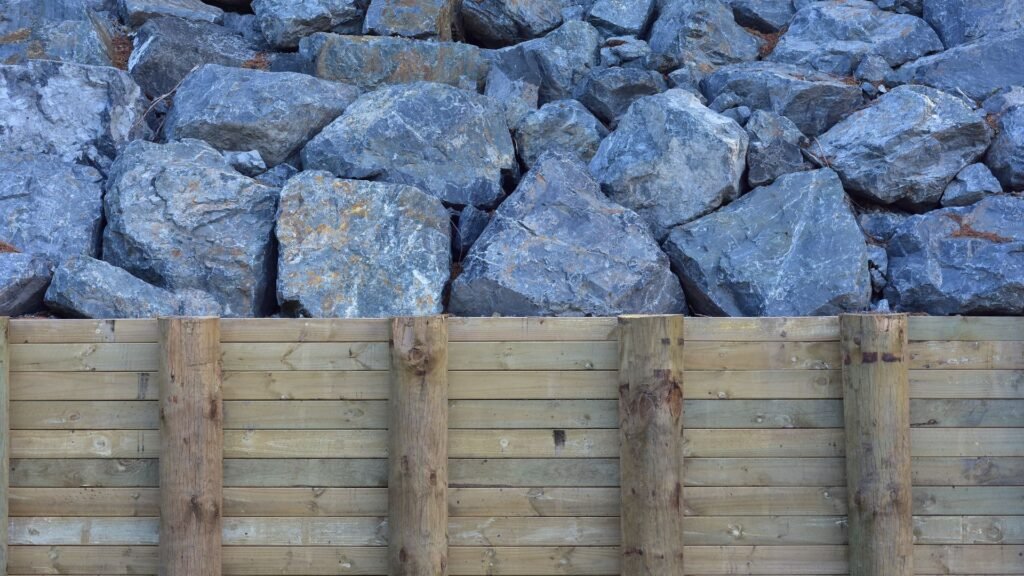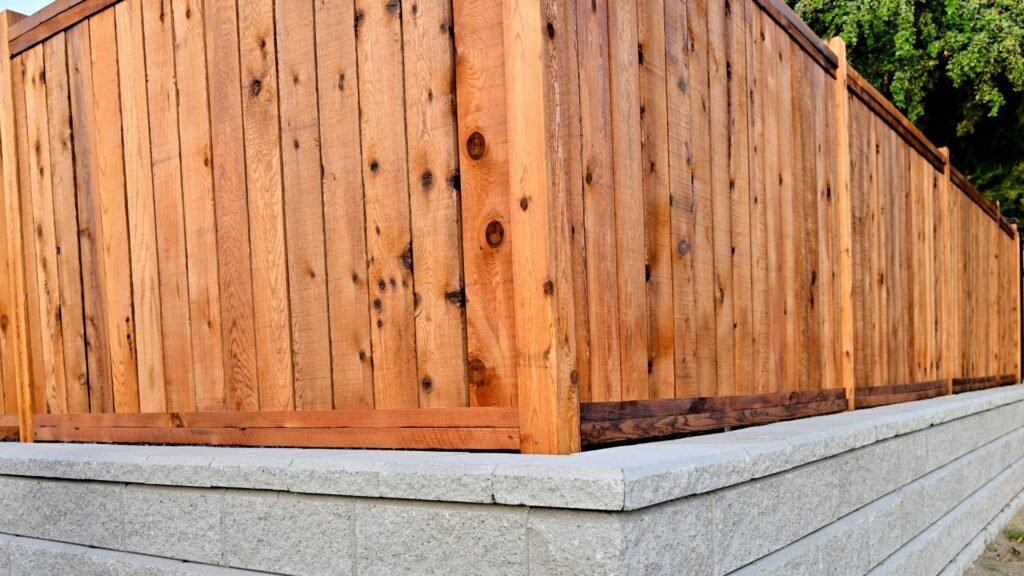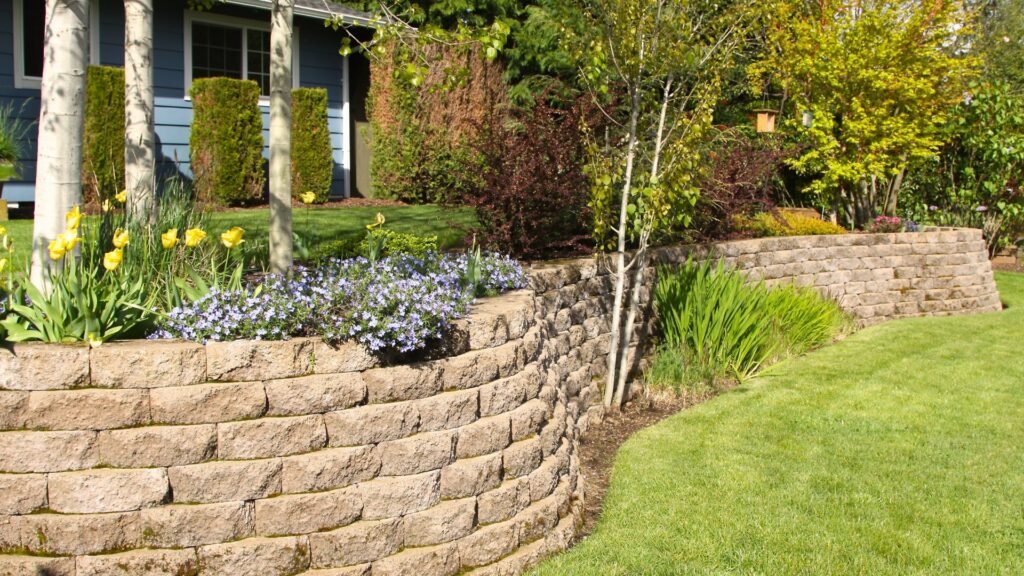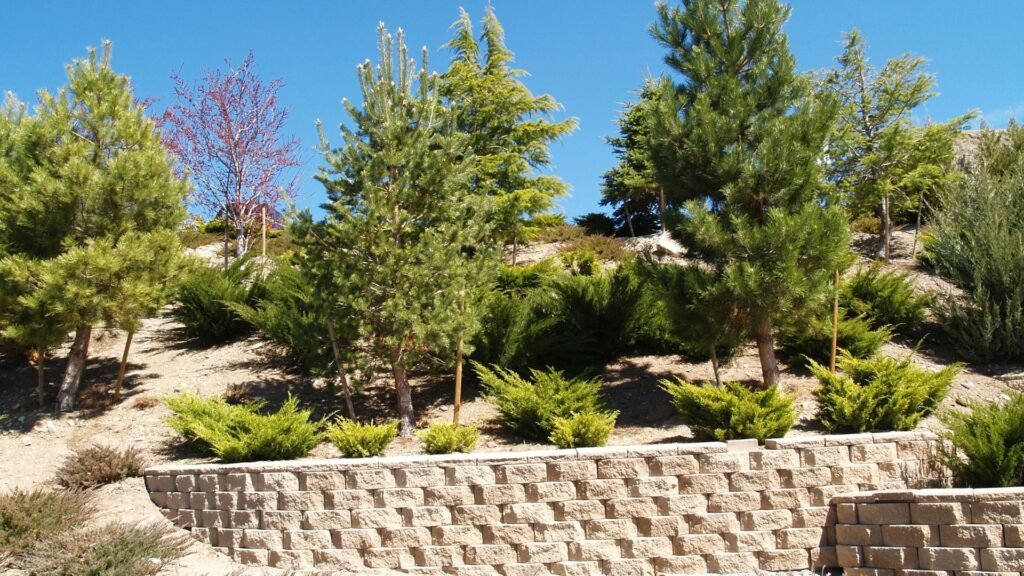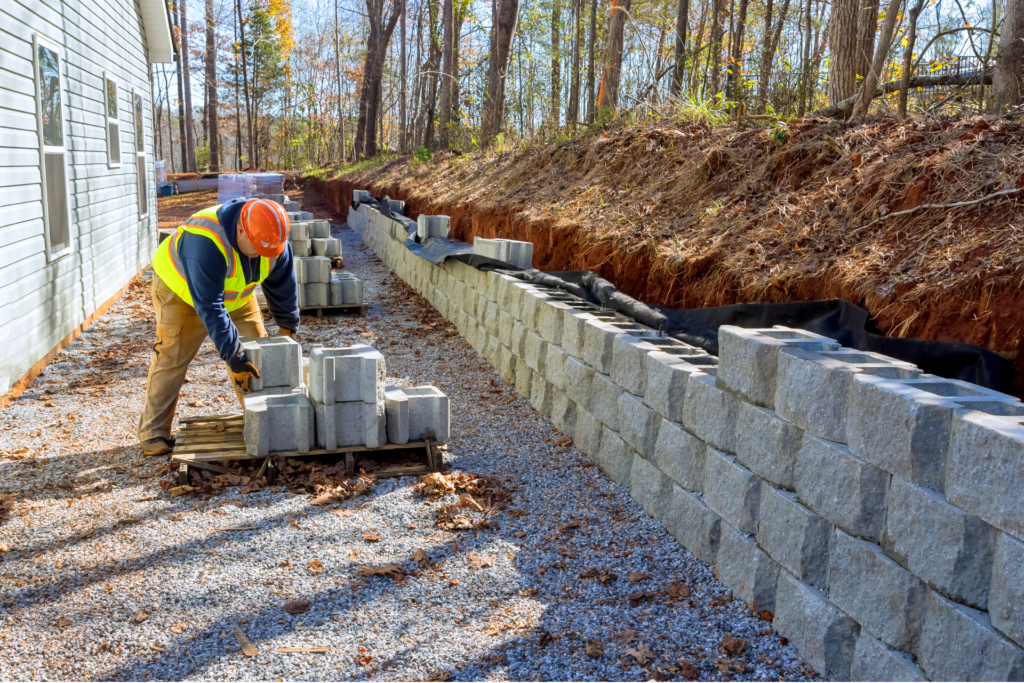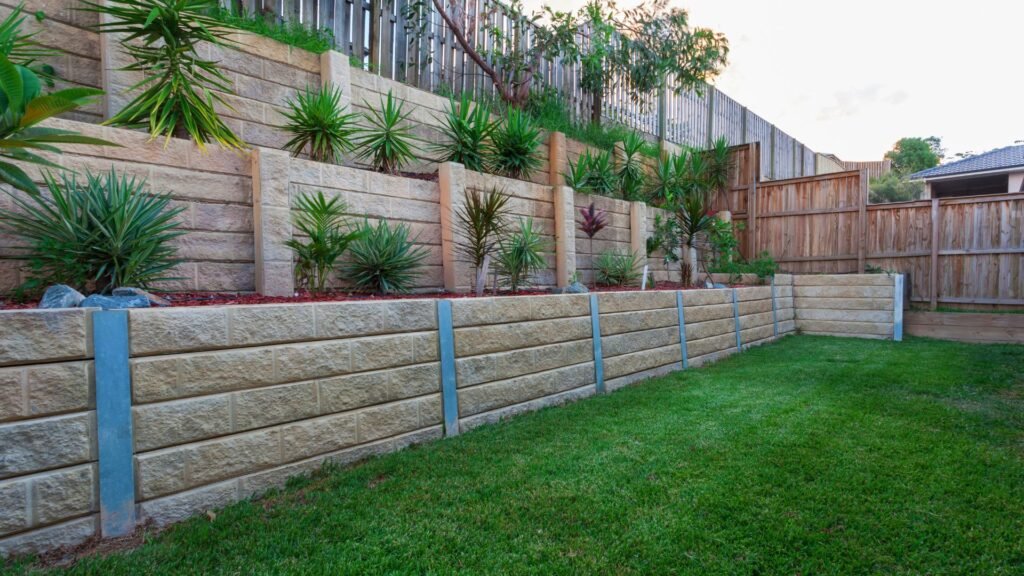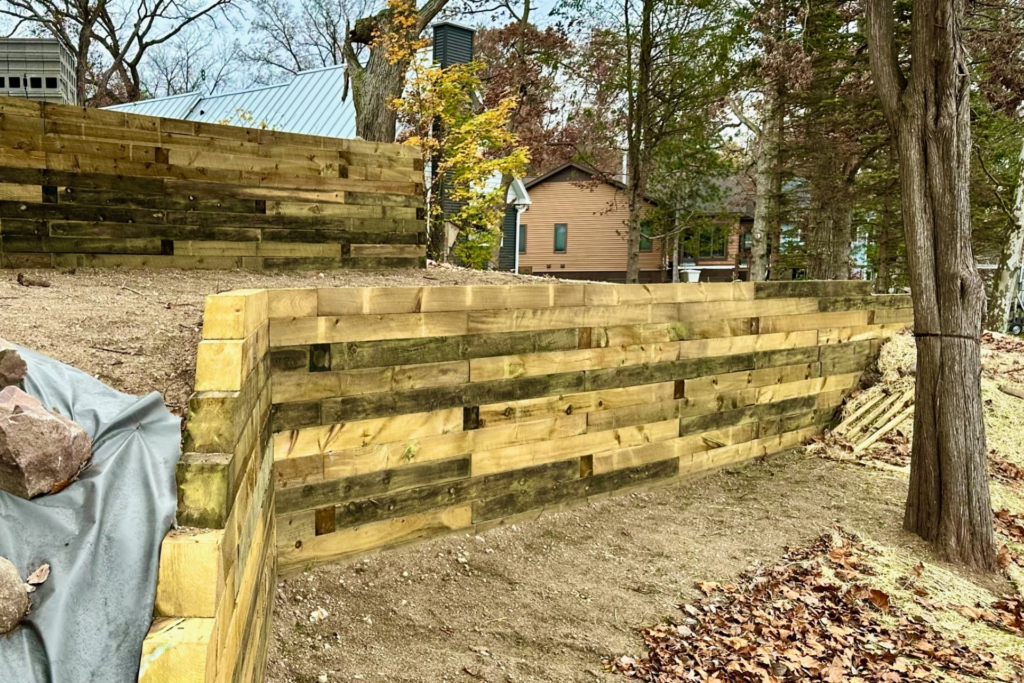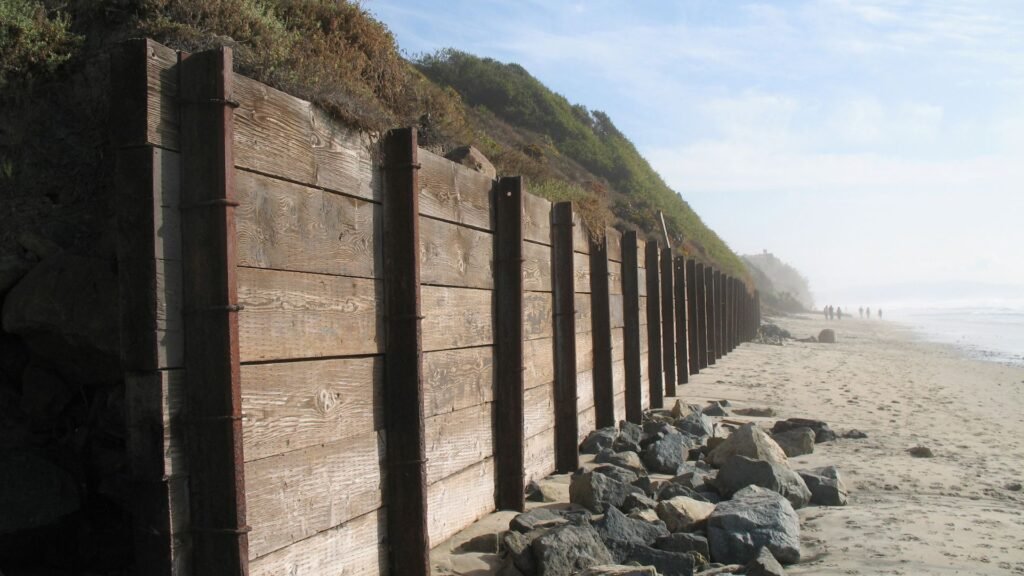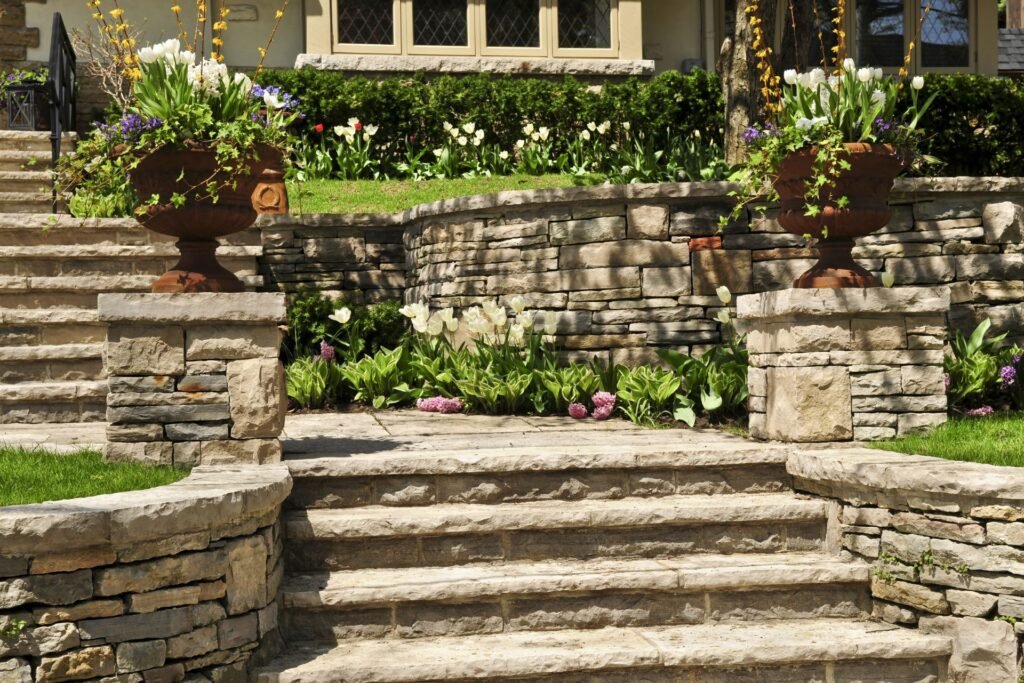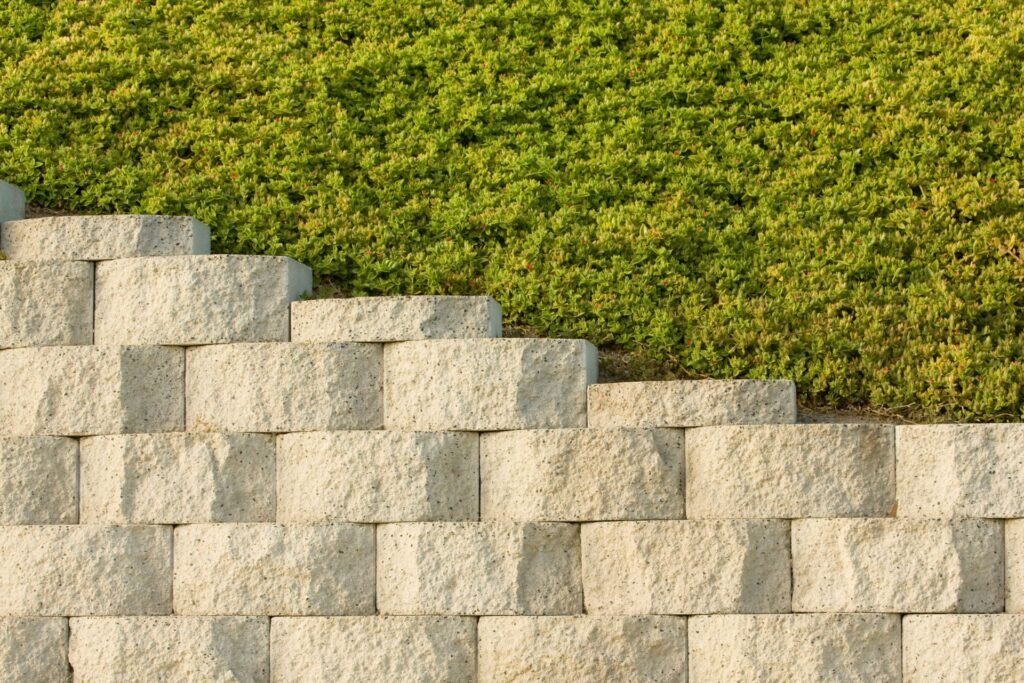Welcome to your go-to guide for understanding retaining wall types in NZ. Whether you’re landscaping a backyard, dealing with sloped land, or just want to stop soil erosion, choosing the right retaining wall matters. With so many options, timber, concrete, stone, and more, it can feel overwhelming. This post breaks down the most popular types used across New Zealand, what they’re best for, how much they cost, and how easy they are to maintain. If you’re planning a DIY project or considering hiring a professional, this guide will help you make the right call for your property and budget.
Common retaining wall types in NZ include timber walls, concrete blocks, stone walls, gabion baskets, crib walls, and sleepers. Each type offers different benefits depending on your land, budget, and design needs. Timber is affordable and great for gardens, while concrete and stone provide long-lasting support for larger areas.
Table of Contents
Do You Need A Retaining Wall?
Not every property in New Zealand needs a retaining wall, but many can benefit from one. If your land isn’t completely flat or if you’re dealing with outdoor space that feels hard to manage, a retaining wall might be the solution. These walls aren’t just for looks, they serve a real purpose in protecting your property and improving its usability.
Here are a few signs that you might need one:
- Sloped Or Uneven Land
If your section is sloped or uneven, a retaining wall can create level areas for gardens, lawns, patios, or driveways. This makes outdoor spaces more functional and easier to maintain. - Erosion Or Water Runoff Issues
Water running downhill can wash away soil and damage your foundation or landscaping. A properly built retaining wall with good drainage helps control runoff and prevent soil erosion, especially after heavy rain. - Expanding Usable Outdoor Space
Retaining walls let you reclaim wasted space. By cutting into a slope and holding the earth in place, you can build flat areas that are safer and more practical for everyday use, like a play area for kids or a spot for a deck. - Supporting Garden Beds Or Driveways
Retaining walls add structure where support is needed. For example, they can hold back soil behind a raised garden bed or support a driveway next to a slope. They can also improve the look of your outdoor layout. - Do You Need Council Consent?
In New Zealand, you don’t always need consent to build a retaining wall, but there are rules. If the wall is over 1.5 meters high, or if it will support extra weight, like a driveway, building, or fence, you’ll likely need approval from your local council. Even for shorter walls, it’s a good idea to double-check before building.
To learn more about the official guidelines, visit the NZ Building Code or your local council’s website. They provide clear advice on when permits are required and how to stay compliant.
By taking the time to assess your property and understand the basic rules, you can build a retaining wall that’s both practical and safe, without running into trouble later.
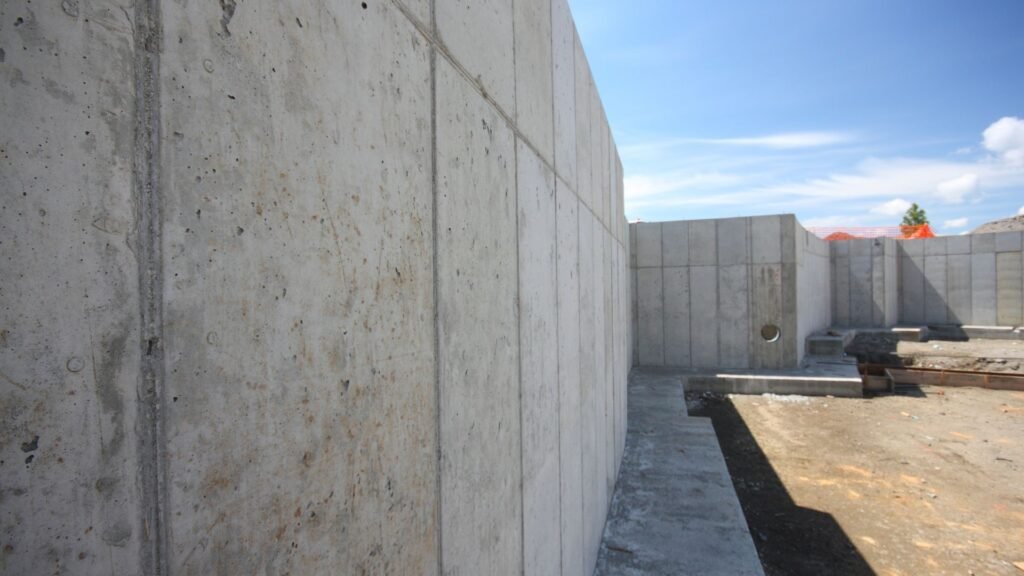
Key Factors To Consider Before Choosing A Wall
Before picking the right retaining wall for your property in New Zealand, it’s important to understand the key factors that affect how well the wall performs and how long it lasts. Each property is different, so the best option for one homeowner might not work for another. Here’s what you should look at before making a decision.
Soil Type And Drainage
The type of soil on your land plays a big role in how your retaining wall should be built. Clay soils, for example, hold water and expand, putting extra pressure on the wall. Sandy soils drain more easily but may not hold structure well. In most cases, some form of drainage system is needed behind the wall to avoid water buildup. Without proper drainage, even a strong wall can fail over time. When you build a retaining wall, always consider how water will move through or around it. Adding drainage pipes, gravel backfill, or weep holes helps reduce pressure and increases the wall’s lifespan.
Wall Height And Load
The height of your wall and what it’s holding back are both critical. A small garden bed wall is very different from a two-meter structure holding back a hillside. The taller the wall, the more weight it has to resist. If you’re building anything over 1.5 meters or supporting a driveway or building, engineering design and council approval are usually required. It’s not just about height either, lateral load from soil, water, and even vehicles or foot traffic must be taken into account. Getting this wrong can result in structural failure, making it important to match the design with the actual demands of the site.
Budget And Maintenance
Your budget will influence both the materials you can afford and the complexity of the wall design. Timber is often the most affordable upfront, while stone and concrete cost more but last longer. Don’t just consider the initial cost, think about maintenance over the years. Timber may need staining or replacement in 15 to 20 years, while concrete might need occasional cleaning but can last much longer. If you plan to stay on the property long-term, investing a little more in a low-maintenance option could save money down the line.
Aesthetic Preferences
Retaining walls are not just functional, they can also change how your outdoor space looks and feels. Some homeowners want a natural, rustic look, which makes timber or stone a good choice. Others prefer modern and clean finishes, like smooth concrete or gabion baskets. Think about how the wall fits with your home’s design and landscaping. Will it be visible from the street or main living areas? Do you want it to stand out or blend in? Choosing a material and design that match your style will improve the visual appeal of your property.
DIY Vs Professional Installation
Some retaining walls are easy to build on your own, especially small ones using timber sleepers or interlocking blocks. But larger, taller, or load-bearing walls often need expert skills and tools. If the wall fails due to poor construction, it can be dangerous and expensive to fix. Hiring a professional ensures the job is done properly, with attention to design, drainage, and structural integrity. It also helps when council consent is needed, as professionals can provide the required plans and certifications. If you’re confident with tools and the job is simple, DIY could work, but know your limits.
By understanding these five factors before building, you can avoid costly mistakes and choose a retaining wall that looks great, functions well, and lasts for years.
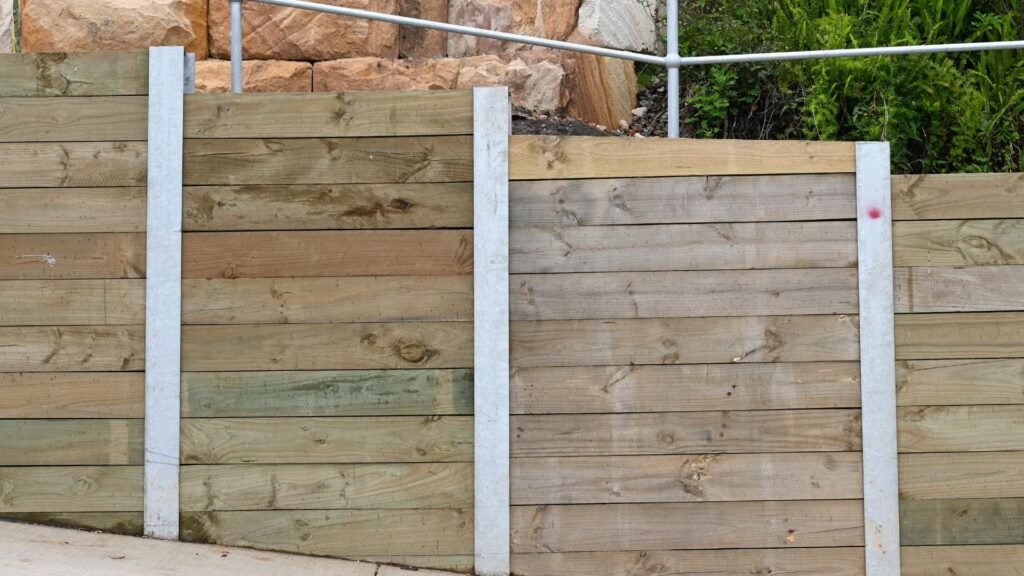
Popular Retaining Wall Types In NZ
When planning a retaining wall project in New Zealand, it’s important to choose a wall type that fits your landscape, budget, and long-term goals. Each retaining wall option offers different benefits and challenges. Below is a detailed explanation of the most popular retaining wall types commonly used across NZ homes and properties.
Timber Retaining Walls
Timber retaining walls are built using treated pine or macrocarpa. These are commonly used across NZ because of their natural look and ease of installation.
Pros:
- Cost-effective
- Blends well with garden landscapes
- Easier to install for DIY projects
Cons:
- Less durable than other materials
- Can rot or warp over time without proper treatment
Best For:
- Garden beds
- Low-height walls
- Residential landscaping projects
Rough Cost Range:
Starts from $200 to $350 per linear meter, depending on timber type and wall height.
Suitability For DIY:
Yes, especially for small walls under 1.5 meters. Perfect for homeowners with basic carpentry skills.
Concrete Retaining Walls
These walls use poured concrete, concrete blocks, or precast concrete panels. They’re a strong and permanent solution for high-load areas.
Pros:
- Highly durable and long-lasting
- Requires minimal maintenance
- Can be finished in various textures or colors
Cons:
- Expensive upfront
- Needs skilled labor and equipment
- Drainage must be properly designed
Best For:
- Supporting driveways or heavy structures
- Commercial or residential retaining projects on steep sites
Rough Cost Range:
Typically $300 to $700+ per linear meter, depending on the design and materials.
Suitability For DIY:
Not recommended. Professional design and installation are usually required.
Stone Retaining Walls
Stone walls use natural materials like schist, basalt, or other local stone. They offer a rustic and timeless appearance.
Pros:
- Visually striking
- Natural and weather-resistant
- High-end finish
Cons:
- Labor-intensive
- Can be very costly
- Requires a solid foundation
Best For:
- High-end landscaping
- Heritage homes or rustic garden designs
- Sloped land with a natural theme
Rough Cost Range:
$500 to $1000+ per linear meter, depending on stone type and complexity.
Suitability For DIY:
Difficult unless you have masonry experience. Best left to professionals.
Gabion Retaining Walls
Gabion walls are made from wire cages filled with rocks. They’re becoming more popular in NZ for both aesthetic and functional use.
Pros:
- Good drainage and erosion control
- Modern industrial look
- Durable and environmentally friendly
Cons:
- It can look rough if not designed carefully
- Wire may rust over time if not galvanized
Best For:
- Properties with erosion issues
- Coastal or rural areas
- Contemporary landscaping
Rough Cost Range:
Approximately $250 to $450 per linear meter, depending on materials and size.
Suitability For DIY:
Yes. Many homeowners choose to assemble gabion walls themselves, especially for small projects.
Brick Retaining Walls
Brick walls offer a classic and tidy appearance, often seen in front yards or small garden areas.
Pros:
- Clean and traditional look
- Long-lasting if built properly
- Can be painted or styled to match the home exterior
Cons:
- Not ideal for very tall walls
- Needs a stable foundation
- Bricks may crack with ground movement
Best For:
- Decorative borders
- Flat properties
- Low retaining needs
Rough Cost Range:
$300 to $600 per linear meter based on size and brick quality.
Suitability For DIY:
Challenging. Bricklaying requires precision, so most homeowners hire a bricklayer.
Sleepers (Wooden Or Concrete)
Sleepers are pre-cut blocks made of treated timber or precast concrete. They’re common in NZ for landscaping and garden beds.
Pros:
- Easy to handle and install
- Available in various finishes
- Works well for tiered gardens
Cons:
- Timber sleepers may deteriorate over time
- Concrete sleepers are heavier and require better support
Best For:
- Raised gardens
- Tiered sections
- Decorative landscaping
Rough Cost Range:
$150 to $400 per linear meter, depending on material and setup.
Suitability For DIY:
Yes. Many homeowners use sleepers for quick, attractive retaining solutions.
Crib Retaining Walls
Crib walls are made from interlocking timber or concrete boxes filled with soil or gravel. They are a modular and efficient way to retain soil.
Pros:
- Good for steep slopes
- Allows drainage through the wall
- Pre-engineered systems available
Cons:
- Takes up more space due to wide base
- Can be costly to install
Best For:
- Large-scale retaining
- Roadsides or commercial landscapes
- Areas with poor drainage
Rough Cost Range:
$350 to $600+ per linear meter based on materials and height.
Suitability For DIY:
Limited. Most crib wall systems require professional installation and site-specific design.
Each retaining wall type in NZ offers unique benefits. Choose what suits your land, style, and budget best for a lasting, practical result.
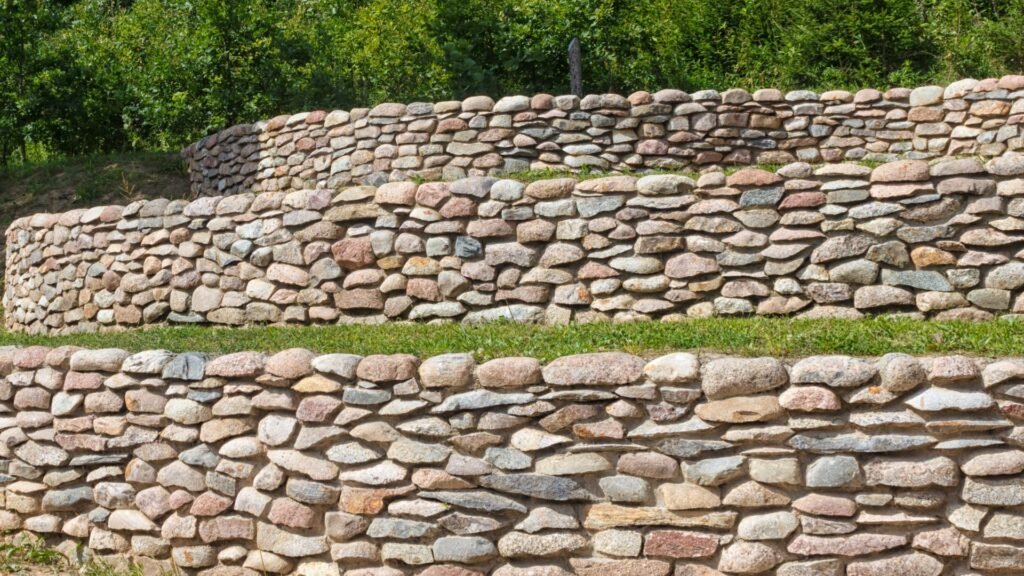
Maintenance Tips By Wall Type
Maintaining your retaining wall properly ensures it stays strong, safe, and visually appealing for years. Each type of wall material, timber, concrete, stone, or gabion, has different care needs. Whether you’re managing a DIY garden wall or a professionally installed structure, following the right maintenance steps can help you avoid costly repairs or early replacements.
Timber Retaining Walls
Timber walls are popular in NZ for their affordability and natural appearance, but they’re also more prone to wear and tear over time. To keep a timber wall in good condition, apply a water-resistant sealant every 1–2 years. This helps protect the wood from moisture damage, especially during wet seasons. Regularly inspect for signs of rot, especially near the base where water tends to collect. If you notice soft, spongy areas or discoloration, replace the affected boards before the issue spreads.
Concrete And Stone Retaining Walls
Concrete and stone are known for their durability, but they still need occasional attention. One of the most important tasks is checking drainage. Poor drainage can cause water buildup behind the wall, leading to pressure that may cause cracks or even collapse over time. Look for weep holes or drainage pipes and make sure they’re not blocked by dirt or plant matter. A blocked outlet can trap water behind the wall and weaken its structure.
Gabion Retaining Walls
Gabions, which are metal cages filled with rocks, require minimal maintenance. However, weed growth between the rocks can be a common issue, especially in outdoor environments where seeds easily settle. To prevent this, remove weeds manually every few months or apply a safe herbicide if needed. Also, check the wire mesh for rust or damage. Over time, exposure to weather can weaken the cage. If the mesh is corroding or sagging, replace the affected section to prevent collapse.
When To Repair Or Replace A Wall
Regardless of the wall type, some signs indicate it may be time to repair or replace the structure. These include leaning or bulging sections, deep cracks, pooling water behind the wall, or shifting soil around the base. Don’t ignore these warning signs. A leaning wall is often beyond a simple fix and may need to be rebuilt. Smaller cracks or damaged panels, however, can usually be patched or replaced without tearing down the whole wall. It’s also a good idea to schedule a professional inspection every few years, especially if the wall supports a slope or heavy load.
Taking the time to inspect and maintain your retaining wall helps protect your outdoor space and keeps it looking its best. Whether you’ve chosen timber, stone, concrete, or gabions, consistent upkeep is key to getting the most value out of your investment.
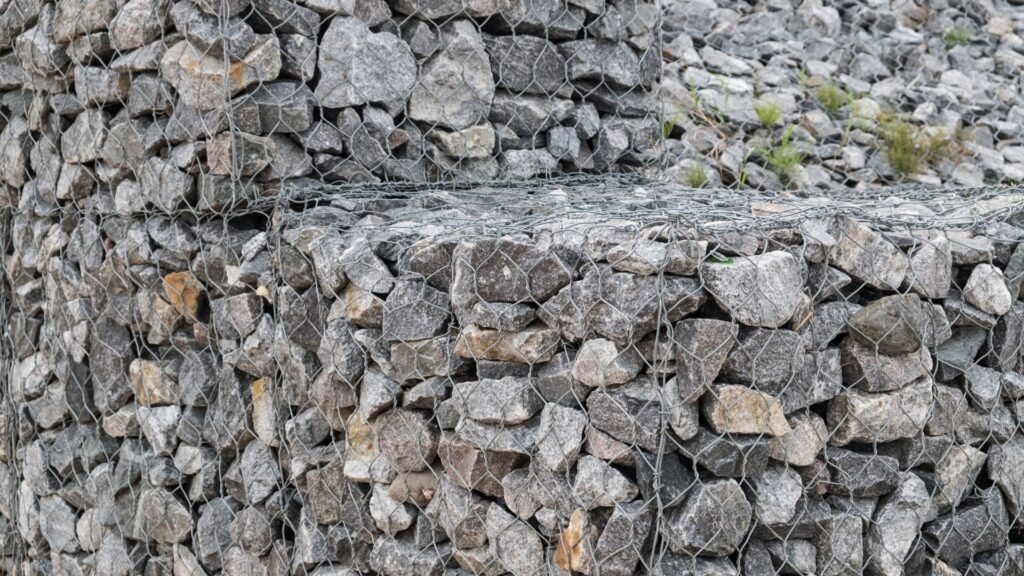
When To Call A Pro
There are times when building a retaining wall yourself can save money and give you full control over your project. But not all retaining wall jobs are suitable for DIY. Some projects require professional skills, experience, and council approval. Knowing when to bring in an expert can save you from expensive mistakes and serious safety risks.
Signs The Job Is Beyond DIY
If your retaining wall needs to support a large amount of soil, is taller than 1.5 meters, or will sit close to driveways, buildings, or fences, it’s best to call a professional. These situations often involve heavy loads and complex drainage needs. Even if you’re confident with tools, structural errors in larger walls can lead to collapse, water damage, or property issues. Cracked concrete, leaning posts, or pooling water behind an existing wall are also red flags that need expert attention.
Getting Council Consent Or Engineering Help
In New Zealand, any retaining wall over 1.5 meters in height or supporting extra weight usually requires a building consent. Local councils often need an engineer’s report to approve these projects. Professionals understand these legal requirements and can provide the right plans and documentation. They also know how to work with geotechnical reports and land surveys when needed. Handling this paperwork on your own can be stressful and time-consuming, especially if you’re not familiar with the process.
Why Proper Design Matters (Safety, Longevity)
A poorly designed wall might look fine at first, but it can fail after heavy rain, strong winds, or soil movement. Proper drainage, footings, and materials are essential for a wall to hold up over time. Professionals take soil type, water flow, and land slope into account when designing a wall. They also choose the right materials based on your property’s needs. This ensures the structure remains safe, durable, and cost-effective in the long run.
If you’re unsure whether to take on a retaining wall project yourself, it’s smart to at least consult a local expert. A quick site visit or quote can help you make an informed decision. Investing in professional help upfront can prevent bigger problems and bigger bills down the track.
Need help choosing the right retaining wall for your property? Visit us to explore our services, get expert advice, or request a free quote today.
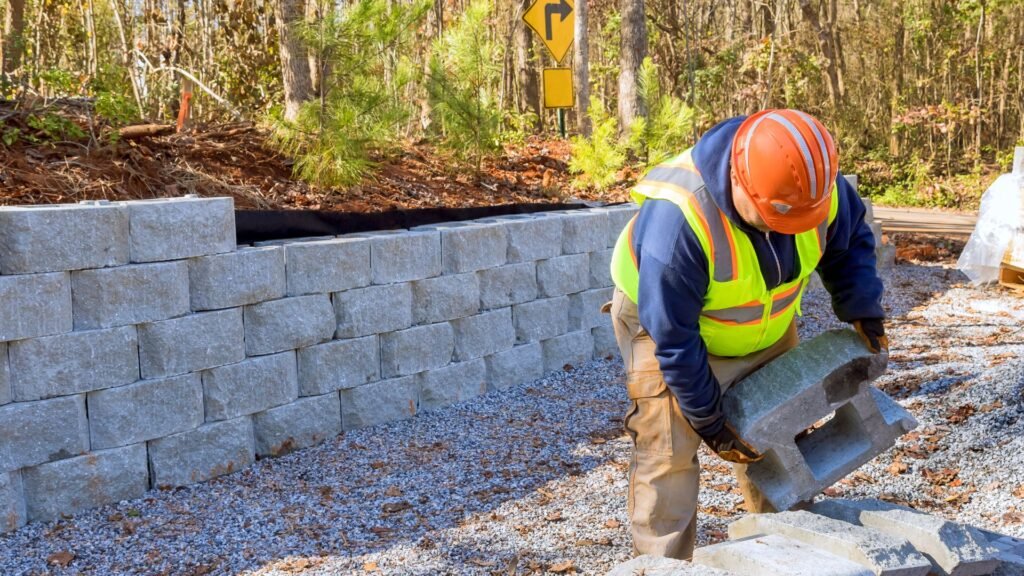
FAQs: About Retaining Wall Types In NZ
What is the most common type of retaining wall in NZ?
Timber retaining walls are among the most common in New Zealand due to their affordability, ease of installation, and natural look that blends well with outdoor spaces.
How do I know which retaining wall type is right for my property?
It depends on your land conditions, budget, aesthetic preference, and wall height. Timber is ideal for small garden beds, while concrete or stone suits higher, load-bearing walls.
Do I need council consent to build a retaining wall in NZ?
Yes, if the wall is over 1.5 meters high or supports additional load, such as a driveway or building. Always check with your local council before starting.
How much does a retaining wall cost in NZ?
Costs vary based on materials and size. Timber walls can start from $200 per linear meter, while concrete or stone can range from $300 to $700+ per linear meter.
Can I build a retaining wall myself?
Yes, small walls (under 1.5 meters) using timber or sleepers can be DIY-friendly. Larger or more complex walls usually need a professional and proper engineering.
Which retaining wall type lasts the longest?
Concrete and stone walls offer the longest lifespan, often lasting several decades with minimal maintenance. Timber walls may need replacing after 15–25 years.
Are gabion walls suitable for residential use in NZ?
Yes, gabion walls are effective for erosion control and add a unique design element. They’re great for properties near water or steep slopes and can often be installed by DIYers.
What’s the best retaining wall for sloped or hilly land?
Crib walls, concrete block walls, or large timber walls are well-suited for stabilising sloped land. These options offer structural support and drainage.
How important is drainage for retaining walls?
Very important. Poor drainage can lead to wall failure. Most walls require gravel backfill and a drainage pipe to manage water behind the structure.
Can retaining walls increase property value in NZ?
Yes, a well-designed and properly installed retaining wall can improve the usability of your outdoor space and enhance curb appeal, making your property more attractive to buyers.
Conclusion
Choosing the right retaining wall type for your property in New Zealand comes down to understanding your land, budget, and long-term goals. From affordable and easy-to-install timber walls to heavy-duty concrete and elegant natural stone options, each material serves a different purpose and suits different site conditions. Gabion baskets, sleepers, and crib walls also offer practical solutions depending on the landscape. Before making a decision, take time to assess your property’s slope, soil condition, and drainage needs. Think about how the wall will look with your outdoor space and how much maintenance you’re willing to manage over time. If you’re unsure about the best option or your project involves more complex requirements, it’s a smart move to speak with a local expert or supplier. They can guide you through your choices and ensure the retaining wall you install is safe, effective, and built to last.
About the Author:
Mike Veail is a recognized digital marketing expert with over 6 years of experience in helping tradespeople and small businesses thrive online. A former quantity surveyor, Mike combines deep industry knowledge with hands-on expertise in SEO and Google Ads. His marketing strategies are tailored to the specific needs of the trades sector, helping businesses increase visibility and generate more leads through proven, ethical methods.
Mike has successfully partnered with numerous companies, establishing a track record of delivering measurable results. His work has been featured across various platforms that showcase his expertise in lead generation and online marketing for the trades sector.
Learn more about Mike's experience and services at https://theleadguy.online or follow him on social media:

